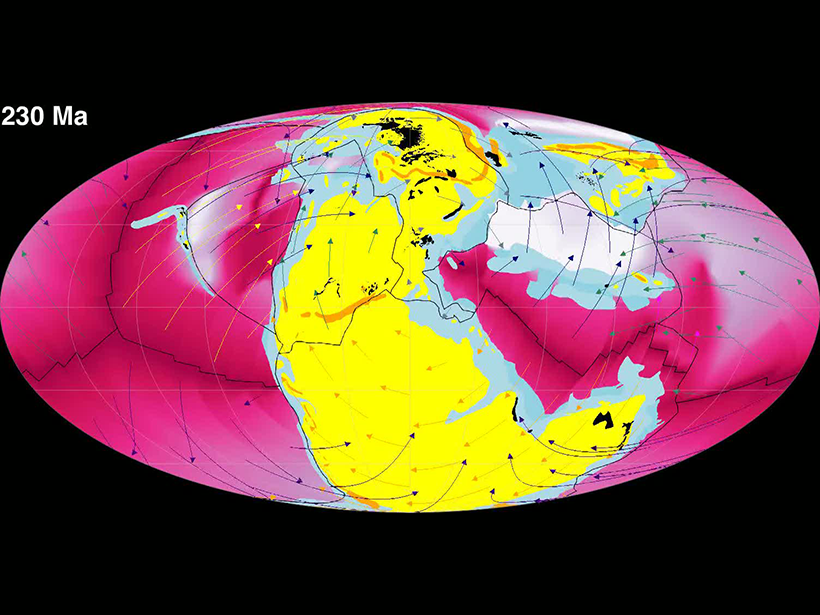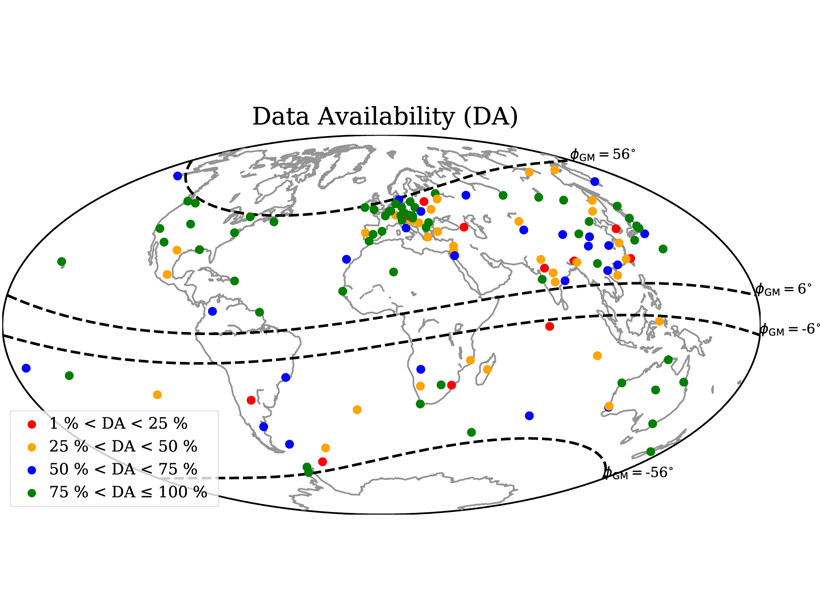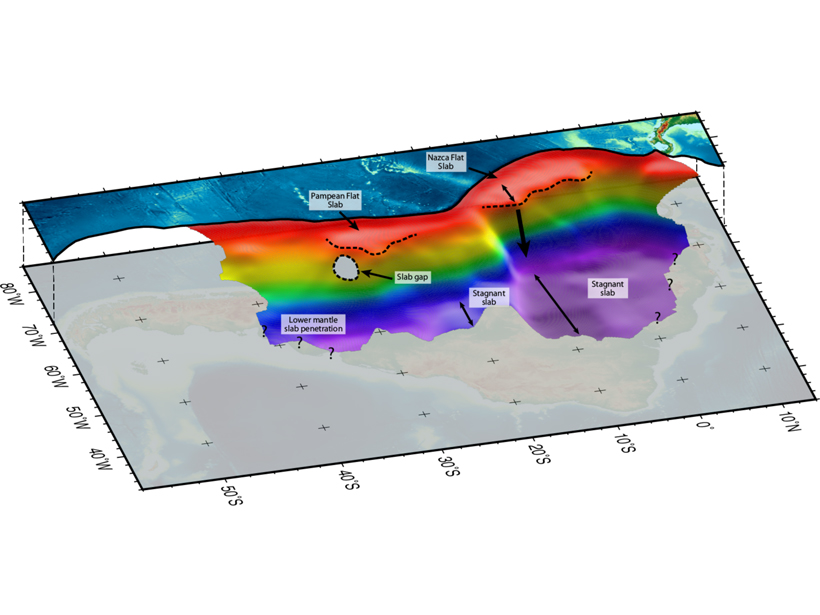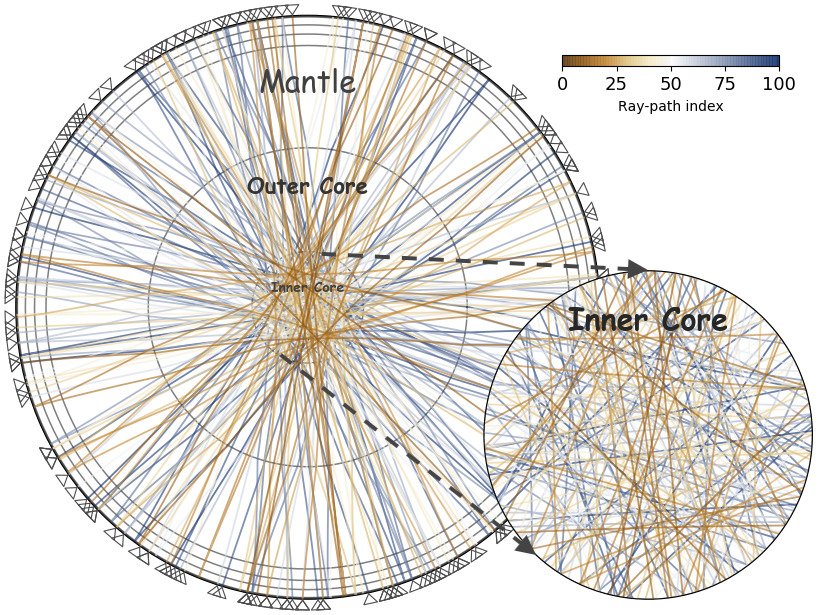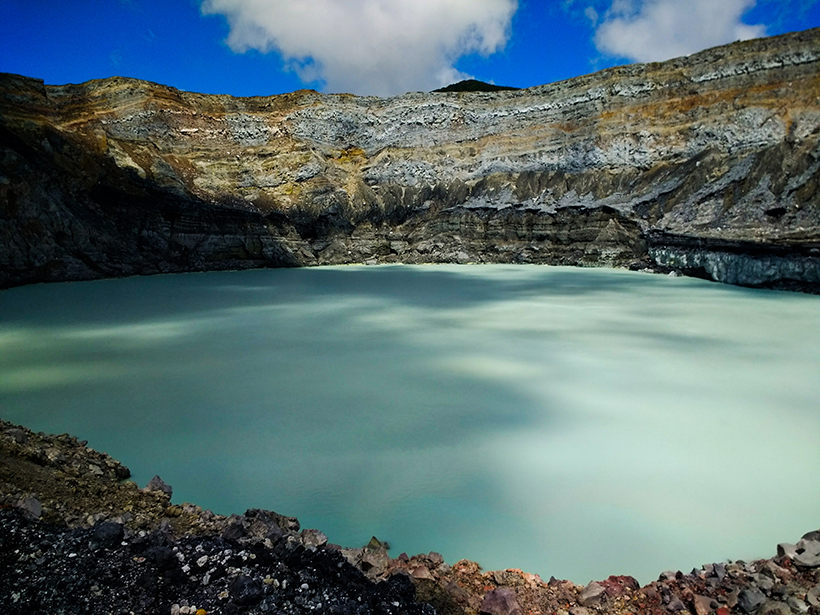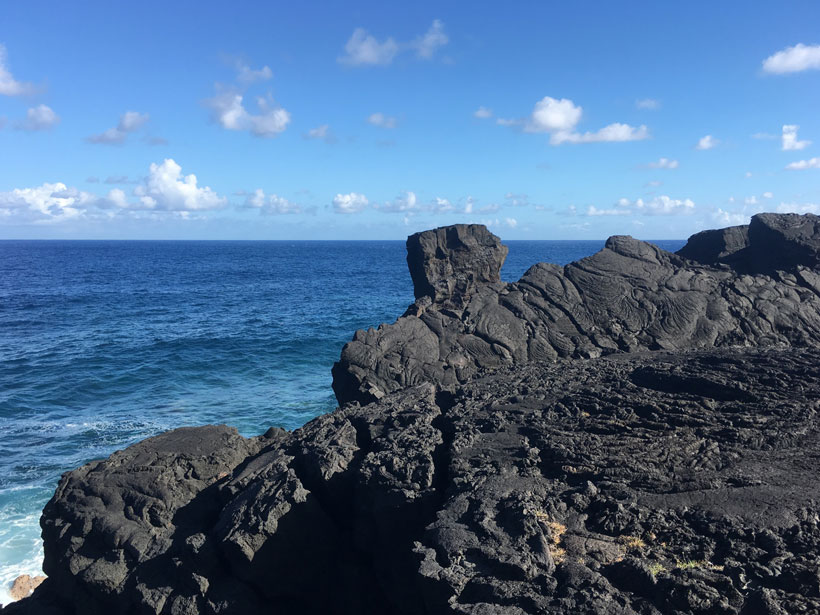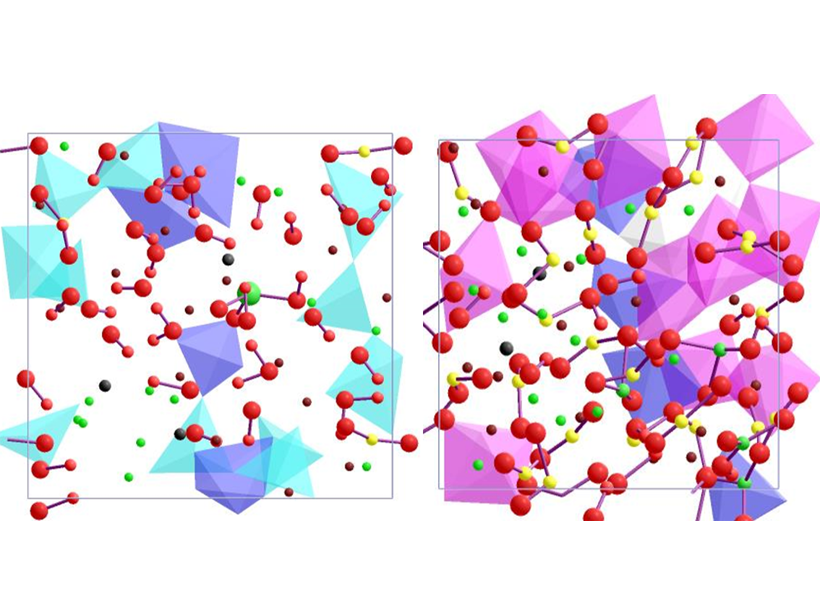Geoscientists have created animations to help visualize different components of Earth’s carbon cycle.
Earth’s interior
Globally Variable Water Content in the Mantle Transition Zone
Using electromagnetic waves originating in the ionosphere and magnetosphere, conductivity profiles reaching the deep upper mantle show surprising variability in water content.
Search for MH370 Revealed Ocean Crust Waves
Efforts to recover the missing airplane produced high-resolution bathymetry of the southern Indian Ocean that raises new ideas about how ocean crust forms.
The Other, Deeper, South American Flat Slab
Tomographers trace the slab subducting beneath South America into the lower mantle, providing the most complete picture of structure beneath the continent to date.
Earthquake-coda Tomography Boosts Illumination of the Deep Earth
A new tomographic method based on correlations of seemingly chaotic earthquake coda waves yields otherwise unobservable arrivals, thus greatly improving illumination of the deep Earth.
Microbial Influences on Subduction Zone Carbon Cycling
An innovative collaboration is investigating how geobiological processes alter fluxes of carbon and other materials between the deep Earth and the surface.
The Eternal Nile Is Even More Ancient Than We Thought
Deep-mantle flow helps maintain the river’s steady course.
Leaky at the Core
New evidence from deep mantle plumes suggests that Earth’s liquid outer core might be leaking tungsten isotopes into the lower mantle.
Hiding Deep Hydrous Melts at the Core-Mantle Boundary
Silicate melts containing H2O in the lowermost mantle are surprisingly dense and may stagnate there, trapping primordial volatiles and potentially causing some of the ultra-low velocity zones.
The Lower Mantle May Have a Wet Bottom
Molecular dynamics calculations suggest that molten hydrogen-bearing iron peroxide (FeO2Hx) may produce the ultra-low velocity zones that occur at the core-mantle boundary.

